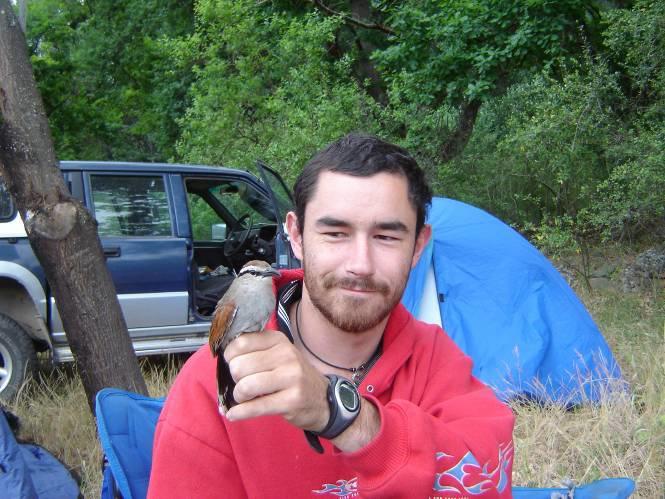Ian Tchagra Little
Other projects
18 Dec 2007
Understanding and Mitigating the Impacts of Land-Use Management Strategies on Grassland Biodiversity I
We propose to study bird diversity and reproductive success as responses to differing burning and grazing practices within the MHG with the aim of assessing which agricultural practices that utilise the natural resources of grasslands can be considered ‘conservation friendly’.

The grassland biome is the second largest in South Africa, but one of the three least protected: only 2.2% of its total area is formally conserved. In South Africa, 100 plant, 12 bird, six mammal and two butterfly species are grassland endemics. Grasslands also contain 10 of the 14 globally Threatened endemic bird species in South Africa. Highveld grasslands (the focus of this proposal) occur at 1400-1800 m a.s.l. and are among the most threatened biotopes in South Africa: currently, only 1.5% of this biotope is formally conserved.
Despite being adapted to frequent natural disturbances (fire), South African grasslands are being increasingly degraded through the cumulative influences of overgrazing, excessive burning, plantation forestry and invasion by alien plants. Most lack the ability to recover after severe disturbance, and 60% of South Africa's grasslands are already transformed by activities other than pastoralism, such as afforestation, cultivation and urbanisation.
This study aims to identify which forms of pastoralism are compatible with biodiversity conservation: its outputs will be directly applicable to the conservation of indigenous, Threatened and endemic species. Although birds (Six specialist grassland species; Yellow-breasted Pipit, Wing-snapping Cisticola, African Pipit, Cape Longclaw, Long-tailed Widow and Common Quail) are used as the model study taxon group, all taxonomic groups are predicted to benefit from identification of, and subsequent application of, conservation-friendly management. Currently, both conservation managers and agricultural extension officers lack the biological information needed to advise on or effect sound management practices.
Implementing sound management practices will have benefits beyond those associated directly with biodiversity. Grasslands provide essential ecosystem services, including forage, soil stabilization and water catchment. Wetlands associated with natural grasslands capture rainfall, filter it and release it gradually, ensuring a sustained supply of high-quality water into rivers. Ensuring conservation of these areas through sound management will promote a continued supply of fresh water into some of South Africa's most important rivers. Given the country’s tenuous balance between water demand and supply, such management practices will thus impart a direct socio-economic benefit. Verlorenvlei Nature Reserve is both a control and management experiment site, it was proclaimed a Nature Reserve in 1983 and further recognized as a RAMSAR site (no. 17) by the International Convention on Wetlands in Switzerland in February 2003.
This work will greatly assist the Ekangala Grassland Project, the South African National Biodiversity Institute’s (SANBI) Grasslands Bioregional Programme and SANBI’s Conservation Farming Project.